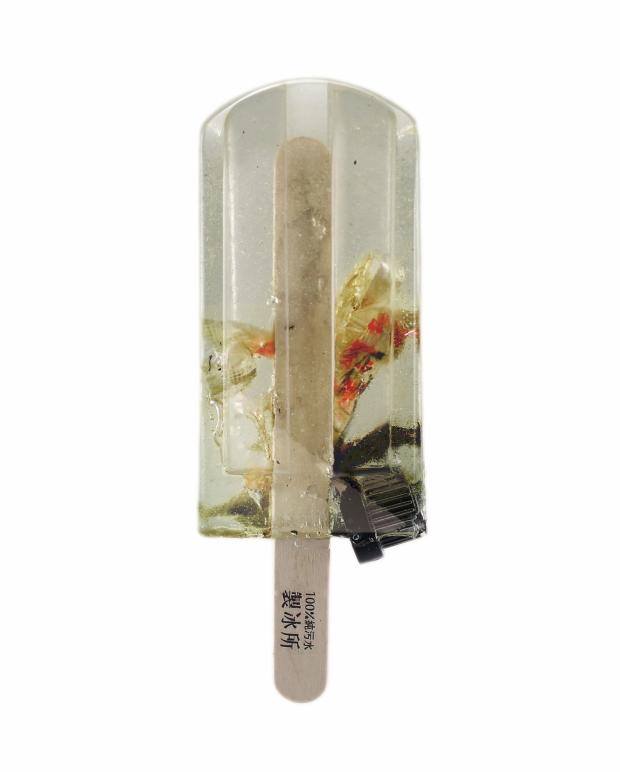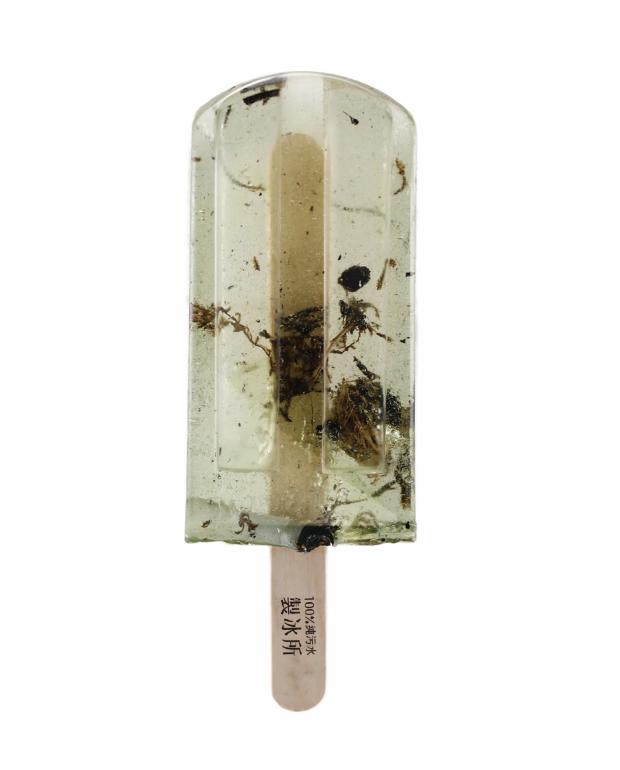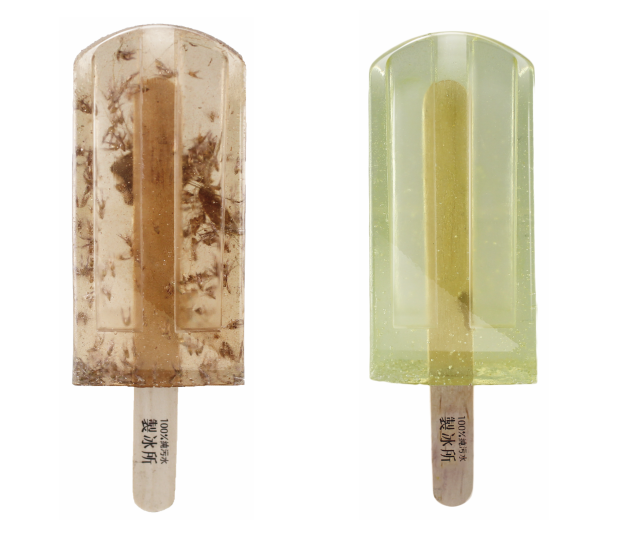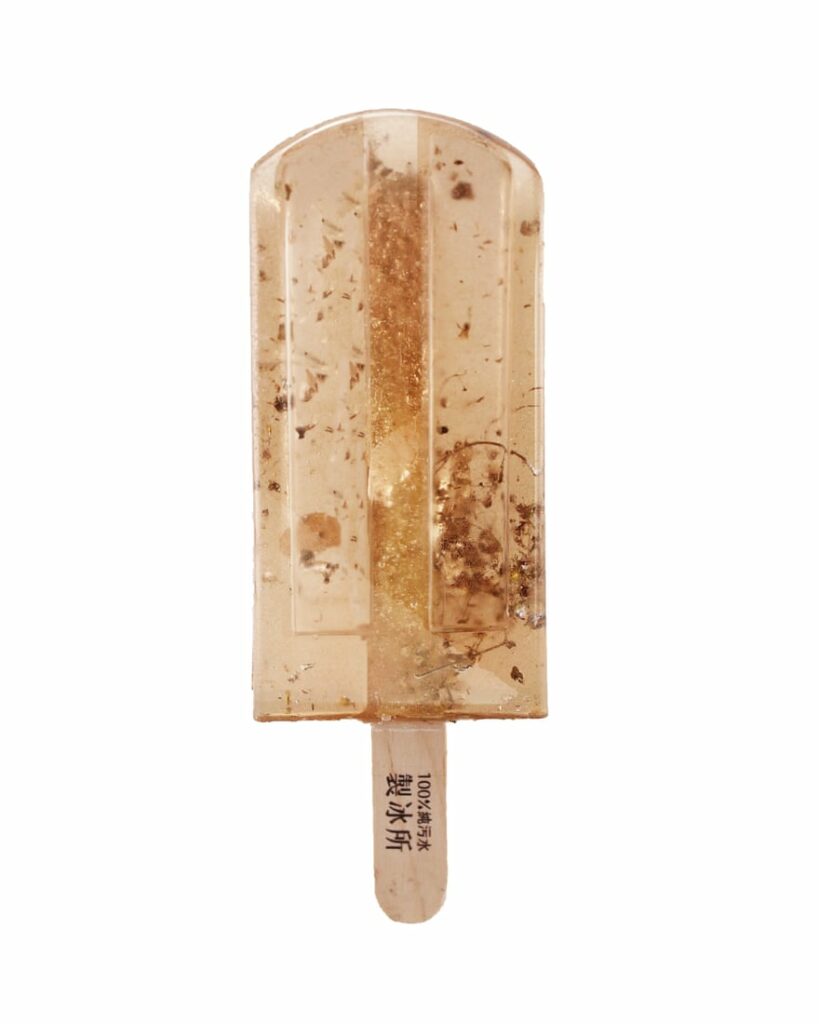
Taiwanese artists Hung I-chen, Guo Yi-hui and Cheng Yu-ti roam the country, searching for polluted water. They first freeze it and then conserve it in resin, in a shape that resembles the familiar frozen popsicles we all know.
At first glance, it looks pretty neat, seemingly imitating the visual imagery of artisanal foods. But when you look closer, the art hides a dirty secret: garbage and pollution.

The popsicles preserve whatever is in the water — from mold and filth to bits of plastic and wrappers.
“It’s made out of sewage, so basically these things can only be seen, not eaten,” Hung said.
Popsicles are also mostly water, Hung added. “(Having) pure water, a clean water source is actually very important,” she said.

The aim of the project is to raise awareness on water pollution — and it’s a pretty comeplling story.
Every day, approximately 8 million pieces of plastic pollution find their way into our oceans. Researchers estimate that there are trillions of plastic pieces in the oceans, as well as in the Arctic ice — both macroplastic and microplastic.

The ice lollies were ranked from dirtiest to cleanest, with the dirtiest made with water from Keelung, a major port city. A 2015 report found over 140 discharge outlets in the port area.
Water samples taken from Taitung and elsewhere in the east of the island were found to be much cleaner.

The project, which was unveiled in 2017, is just as relevant now. Little has improved in terms of water pollution in the past couple of years — quite the contrary.
Oh, and if you think these popsicles are gross, then you might want to learn that according to one report, humans ingest up to 100,000 pieces of microplastic every year. So whether we like it or not, we’re probably all eating popsicles like this, one way or the other.

Ultimately art is about sending a message, and this one hits right through.
‘We hope when more people see this they can change their lifestyles,’ the artists concluded.



